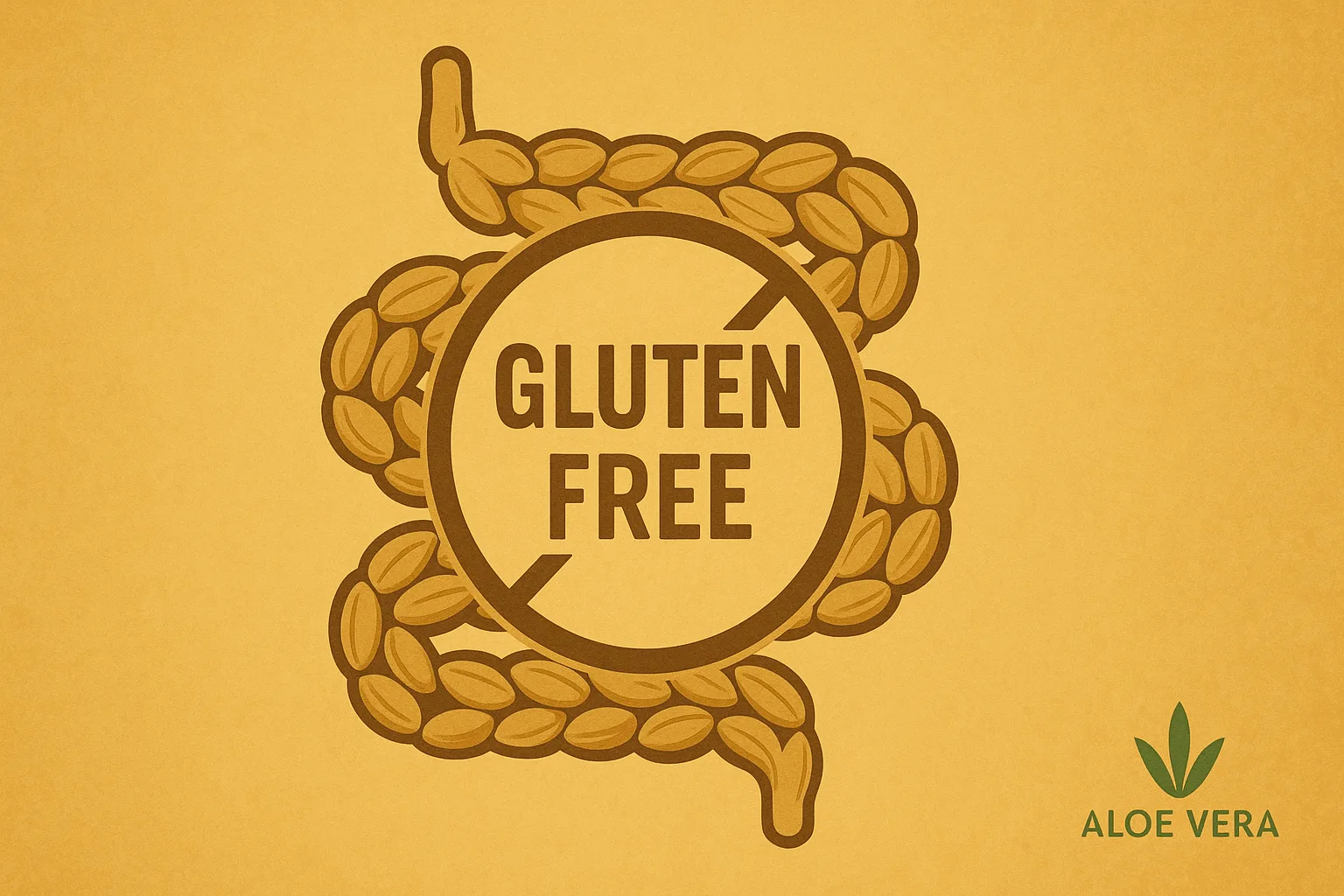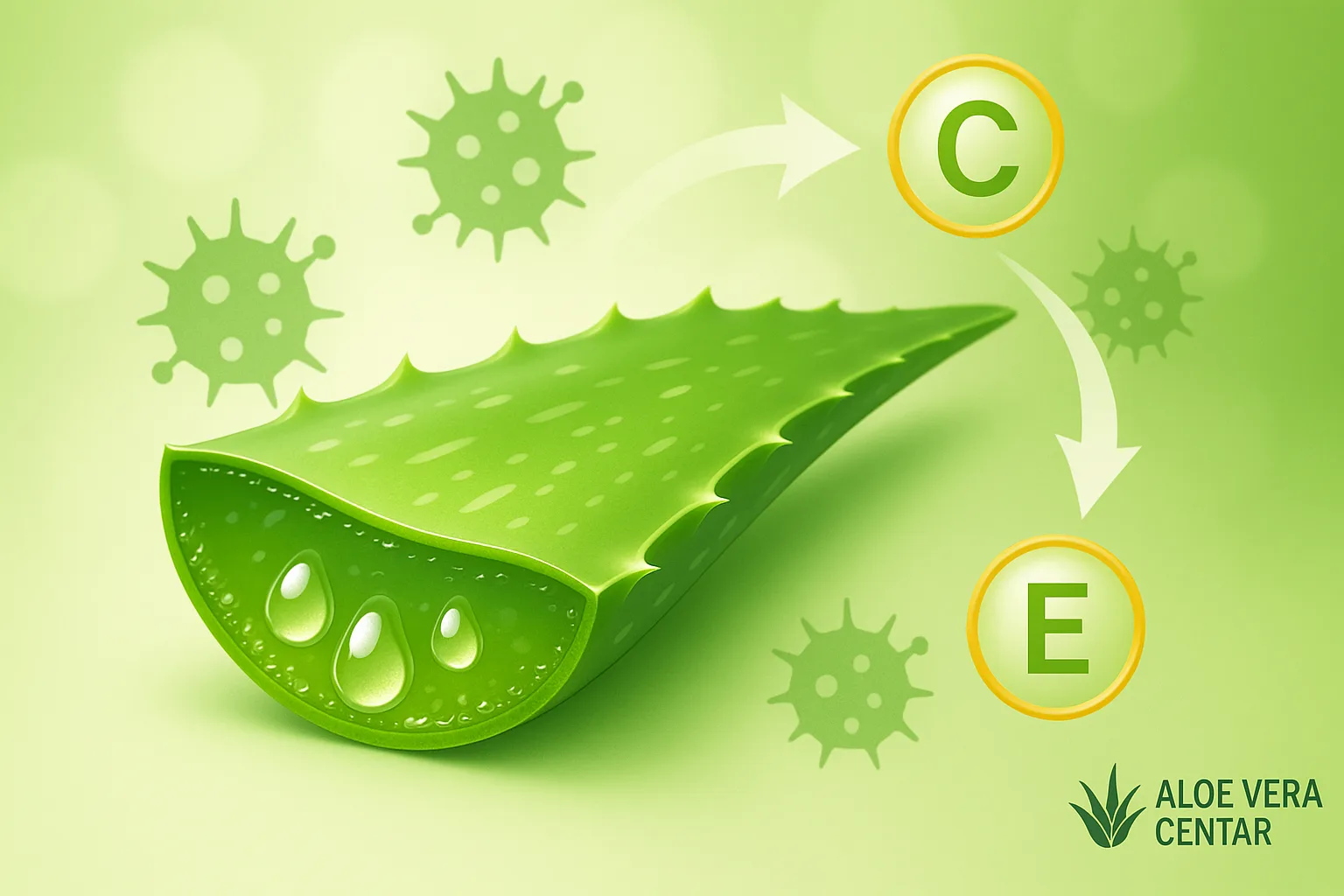
Celiac Disease Symptoms in Adults – Recognize Early Signs and Make your Life Easier
Celiac Disease Symptoms: Recognize Early Signs and Support your Body Naturally
Celiac disease symptoms can manifest in various ways, especially in adults who may live with unrecognized gluten sensitivity for years. It’s an autoimmune disease where the immune system overreacts to gluten, a protein found in wheat, barley, and rye. This reaction leads to damage in the small intestine lining, impaired nutrient absorption, and a range of uncomfortable health issues. However, like other conditions in the Autoimmune diseases group, celiac disease doesn’t only affect one part of the body – its effects can be widespread and impact overall quality of life.
You might be wondering what the most common signs of celiac disease are, or specifically how celiac disease symptoms in adults manifest. We’ll discuss exactly that below: how to recognize the first signs of the disease, how it connects with other autoimmune disorders like low TSH or Hashimoto’s, and which natural methods help alleviate symptoms and restore balance in the body. Keep reading to discover a comprehensive approach to improvement!
What is Celiac Disease and why Does it Occur?
Celiac disease is one of the most common chronic small intestine diseases, caused by gluten intolerance. When a person with celiac disease consumes gluten, the immune system triggers an inflammatory response that damages the villi in the small intestine. This can result in weight loss, anemia, and numerous other complications.
Like psoriasis or joint pain that can occur with immune system disorders, celiac disease also falls into the category of autoimmune diseases. This means the body “makes a mistake” and instead of protecting cells, it attacks its own structures due to recognizing gluten as an invader. Therefore, there’s increasing discussion about the importance of a holistic approach and strengthening immunity through natural methods.
The Difference between Wheat Allergy and Celiac Disease
Although there are similarities, wheat allergy and celiac disease are not the same. With wheat allergy, the immune system primarily reacts by creating antibodies (IgE) that cause typical allergic reactions (e.g., sneezing, rash, itching). Celiac disease involves a more complex, long-term inflammatory reaction targeting the small intestine and disrupting absorption.
Celiac Disease Symptoms in Adults: how to Recognize Them?
Celiac disease signs can vary drastically from person to person. Celiac disease symptoms in adults are often less obvious than in children, and due to their diversity, it’s not always easy to suspect this disease. However, there are several characteristic manifestations:
- Digestive issues: Chronic diarrhea, constipation, bloating, and abdominal pain.
- Unintentional weight loss: Even with normal or increased food intake, people may lose weight due to reduced nutrient absorption.
- Fatigue and exhaustion: A result of malabsorption of essential vitamins and minerals, especially iron, which can lead to anemia.
- Bone and joint pain: Can occur due to inflammatory processes and lack of key nutrients.
- Skin changes: Some patients develop dermatitis herpetiformis – itching and a blister-like rash.
- Mood changes and anxiety: Gut health is often connected to nervous system health, so many patients experience anxiety or even depression.
- Infertility or pregnancy problems: Though less commonly mentioned, can be linked to long-term nutritional deficiencies.
Some symptoms are subtle, making celiac disease often underdiagnosed. When classic digestive system issues appear, it’s much easier to suspect this condition. However, some individuals may have “silent” celiac disease: intestinal damage exists, but symptoms are minimal or atypical.
Connection between Celiac Disease and other Autoimmune Diseases
When discussing autoimmune diseases, it’s important to note that they often come “in packages.” Once the body starts incorrectly reacting to its own cells, the chances of developing other autoimmune conditions increase. Many people diagnosed with celiac disease may notice symptoms like low TSH (problematic thyroid function) or Hashimoto’s (autoimmune thyroiditis). Also, certain skin changes or psoriasis can occur precisely due to complex immunological mechanisms.
Another common companion of celiac disease is joint pain, as a result of constant inflammation and lack of key nutrients that contribute to cartilage and connective tissue preservation.
Why Do Associated Disorders Occur?
There are several theories, and one of the leading ones suggests that “leaky gut” allows large molecules to pass through the intestinal wall into the bloodstream, triggering a chain reaction of immune responses. Long-term, such a reaction can get out of control and spread to other body systems.
Standard Medical Diagnosis and Treatment
If you suspect celiac disease, the first step is consulting a doctor. Blood tests for antibodies (e.g., tTG-IgA, EMA) are usually performed, and final confirmation often includes a small intestine biopsy. After confirming the diagnosis, the only effective treatment is a strict gluten-free diet – eliminating wheat, barley, rye, and any possible contamination from the diet.
Some people also introduce other changes, such as reducing dairy products or improving gut flora using probiotics, as damaged small intestine mucosa can temporarily make lactose digestion difficult.
Natural Approach to Alleviating Celiac Disease
Along with the classical approach (gluten-free diet), many turn to natural methods that additionally strengthen immunity and accelerate intestinal mucosa regeneration. Here are several useful guidelines:
1. Supporting Beneficial Bacteria
Our intestines are home to billions of bacteria that affect digestion, immunity, and mood. With celiac disease, the microbiome balance is often disrupted. Supplementation with quality probiotics or foods containing natural probiotics (e.g., lactose-free yogurt, kefir, sauerkraut) can be beneficial. Many have tried Forever Active Pro B as a supplement to support healthy digestion and immunity.
2. Anti-inflammatory Foods
When it comes to celiac disease, the body is in constant inflammation. Therefore, include foods that can calm it: ginger, turmeric, leafy green vegetables, avocado, fish rich in omega-3 fatty acids (salmon, sardines). At the same time, try to eliminate processed foods, refined sugars, and trans fats that increase inflammation.
3. Aloe Vera for Mucosa Regeneration
Many studies and experiences support aloe vera as natural support for the digestive system. Nutrients, enzymes, and anti-inflammatory properties can help calm inflammation and promote mucosa regeneration. For additional digestive tract care and body revitalization, people often reach for high-quality aloe juices or gels.
4. Regular Exercise and Stress Reduction
Stress intensifies inflammatory processes in the body. That’s why regular exercise (such as yoga, pilates, brisk walking) is a great way to release accumulated tension and improve circulation. Additionally, activities like meditation or guided breathing exercises can help cope mentally with the disease, especially since celiac disease requires consistent and strict dietary changes.
5. Hydration and Dietary Supplements
Gut health cannot exist without adequate fluid intake. Additionally, people with celiac disease often suffer from deficiencies in iron, folic acid, vitamins B12 and D. Supplements can help compensate for deficiencies, but it’s always advisable to consult with a doctor to get the right combination and dosage.
Can an AI Advisor Help with Dietary Dilemmas?
If you feel overwhelmed with information and aren’t sure where to start, you can use our AI advisor. In a few short steps, you’ll get personalized guidelines about which foods and supplements might be worth considering as part of your plan to alleviate celiac disease symptoms. However, keep in mind that AI support is not a replacement for professional medical opinion – it’s here to help, not to replace your doctor!
Case Study: “Ivan and Life without Gluten”
Ivan (45) had unexplained fatigue, frequent diarrhea, and abdominal pain for years. His doctor first advised him to take an allergy test, but there were no significant findings. After that, detailed blood work and endoscopic examination confirmed celiac disease. Initially, he struggled with the thought of eliminating all forms of gluten from his diet – he wasn’t aware how much wheat “hides” in common foods, from bread to ready-made sauces.
After adopting gluten-free habits and introducing probiotics, aloe vera drinks, and adding more vegetables to his daily menu, he felt more energetic after just a few weeks. Digestive issues became less frequent, and his blood work improved. He says that regular meal planning and education about reading labels helped him the most. Today, he consciously chooses fresh ingredients and emphasizes that while a strict gluten-free diet is challenging, it’s worth it when the results are this good.
And if you want to test natural supplements while saving money, take advantage of a 15% discount on your first order and equip yourself with products that will support your digestive system and overall health.
Frequently Asked Questions
1. Do I Have to Eliminate Gluten for Life if I’m Diagnosed with Celiac Disease?
Yes. Currently, there is no cure that would “erase” celiac disease, so a lifelong gluten-free diet is the only safe way to maintain intestinal health and prevent complications. It might seem challenging at first, but with good organization and information, it becomes part of daily life.
2. Can Someone with Celiac Disease Tolerate Small Amounts of Gluten?
Even minimal amounts of gluten can damage the small intestine and trigger symptoms, although symptoms may not appear immediately in every individual. It’s important to be careful with food “contamination,” for example when regular flours and gluten-free foods are stored or prepared in the same space without necessary separation measures.
3. Is it Possible to Have “just” Gluten Intolerance without Celiac Disease?
Yes, people can have non-celiac gluten sensitivity (NCGS), where symptoms are similar (bloating, diarrhea, fatigue), but there is no intestinal mucosa damage as seen in celiac disease. If you suspect this, an accurate diagnosis can only be made by a medical professional.
4. How to Handle Social Situations and Eating out?
It’s practical to arrange the menu in advance with hosts or restaurants. Today, more restaurants offer gluten-free options, but be clear when ordering and inquire about food preparation to avoid cross-contamination.
Conclusion
Celiac disease symptoms aren’t always obvious, especially when it comes to celiac disease symptoms in adults. However, as soon as you suspect that “something isn’t right,” it’s worth checking: earlier disease recognition means more successful introduction of a gluten-free lifestyle, fewer complications, and better quality of life. Don’t forget that celiac disease often appears alongside other autoimmune diseases, so comprehensive care for immunity and gut health is extremely important.
If you want additional support or want to better plan your diet, feel free to use our AI advisor. Thanks to modern technologies and rich expert sources, you’ll be able to get targeted guidelines and ideas. And of course, don’t forget to check the 15% discount opportunity to obtain quality supplements that will facilitate adaptation and promote faster regeneration of your body.
Disclaimer: This article is not a substitute for professional medical advice. If you suspect celiac disease or any other health problem, be sure to consult a doctor and follow recommendations given by medical professionals.








